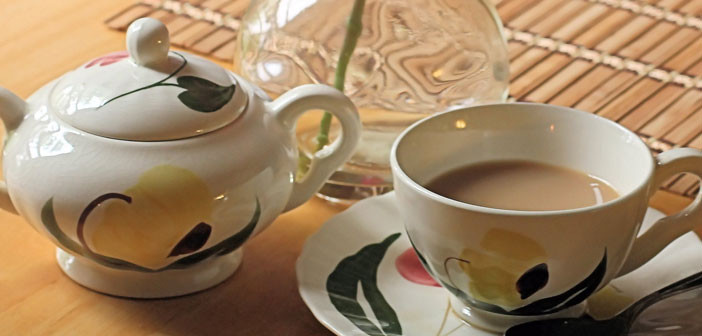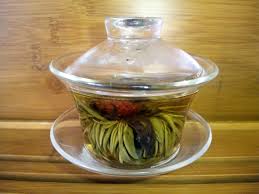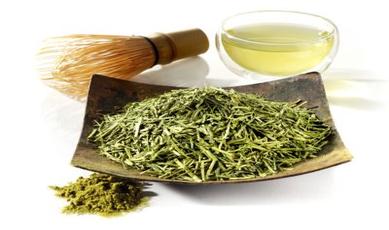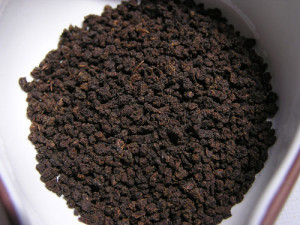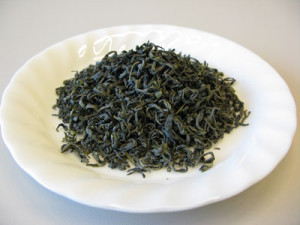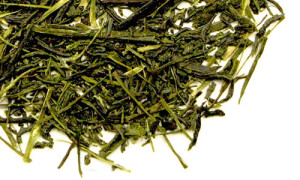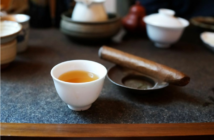Tea terminology can be mind-bogglingly complex. Which is why we have Tea A-Z, a guide to deciphering both common and completely bewildering concepts from the world of tea. Let’s dive in!
Used for steeping tea, this large, lidded bowl is called a gaiwan. Made of bone china, the lid is gai, the bowl wan and the saucer die. It allows the tea leaves to properly steep and spread out in order to fully release the flavors and aromas. The lid contains the steam within the bowl to steep the tea efficiently and the saucer enables the hot bowl to be held.
Mixed with popcorn and toasted brown rice, this Japanese green tea with a toasty aroma and complex, toasty flavor is very popular today. Poor Japanese peasants drank it as an economical alternative because the popcorn and rice provided a filler to decrease the cost.
The goal in preparing green tea is to completely avoid oxidation (fermentation). It completes the stages of processing. Roasting, the first stage, involves roasting the tea leaves almost immediately after picking. This destroys the enzymes that cause fermentation. Japanese green tea is cooked by steam for 30 seconds to five minutes over a wood fire in large, shallow pans. Chinese green tea is heated to 100°C. After heating, the leaves become soft and pliable. The second stage, rolling, involves rolling the tea leaves by hand or by folding them on a table into sticks, balls or coils in order to remove the moisture. During the third and final stage, the tea is dried on racks by circulating hot air for approximately two or three minutes
This green Chinese tea is grayish in appearance, similar to gunpowder. Prior to drying, it is rolled into tiny balls the size of pellets. The pellets expand in hot water into a tea that is sweet and faintly smoky in flavor. The compact roll helps the tea retain its flavor and freshness longer.
Produced using a method that makes it appear and taste comparable to the Chinese pan-fired teas, guricha is distinctive and popular variety of Japanese green tea. The final kneading process is left out to produce the comma-shaped leaves.
Gyokura means “pearl dew” or “precious jade dew”. It has a vivid jade coloring, a distinguished aroma, is sweet in flavor and has a rich and smooth feel. It is produced from tea grown on shaded bushes that allow the leaves to absorb additional nutrition from the fertile soil and can only be picked by hand in specific areas of Japan once annually. Once harvested, the top grades are contained in cold storage for approximately six months prior to the final stages of processing. Gyokura is a top-grade Japanese tea that is produced in the Uji district, which is known for producing some of the optimum green teas in Japan.

